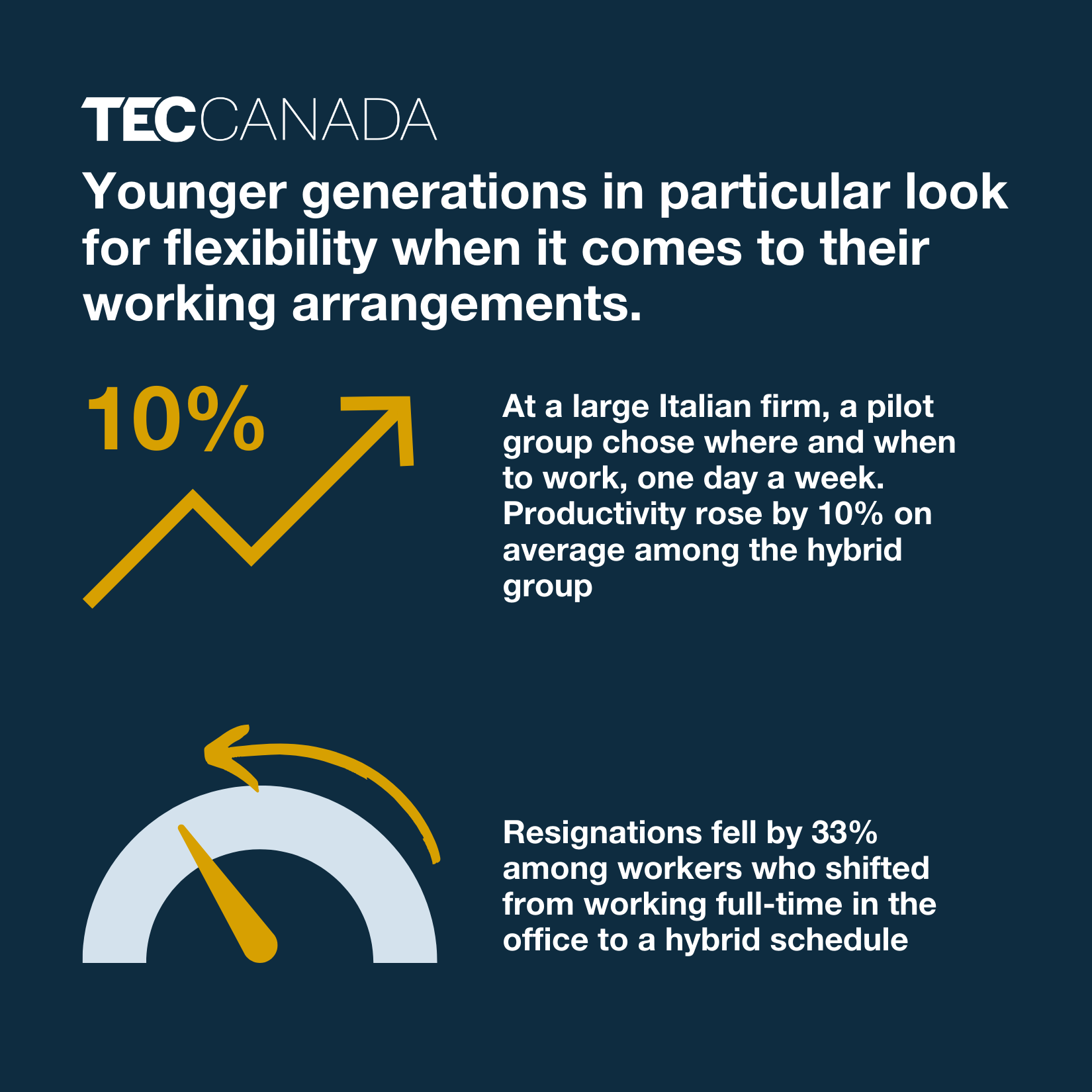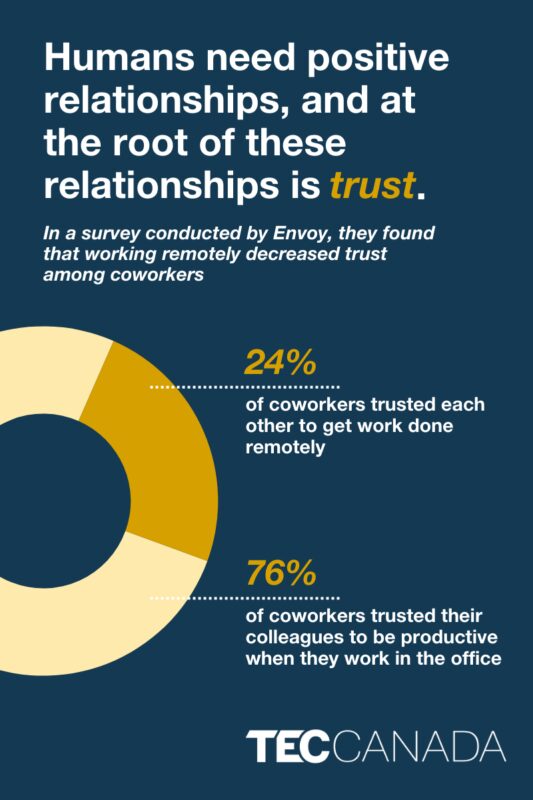The Office Returns: The Truth About Hybrid Work
The pandemic introduced unprecedented change to our economy. One major shift was opening the door to remote work and all its implications, both good and bad.
Where Are We Now?
The smoke has cleared from the COVID-19 pandemic—optimistically speaking— and many employees are returning back to the office in either full-time or hybrid work arrangements. There continues to be a discrepancy between employees and employers about working in person, particularly in public sector unions.
Is it possible to go back to the way things were before the pandemic? Which way is truly more productive?
This is a complicated issue, as are humans and their individual needs. There is no one-size-fits-all solution for businesses navigating this new work environment. Our goal with this blog is to provide some insight into this issue to assist small to medium-sized business owners in their decisions.
Well-Being for All
Employers are often of the opinion that working in the office is better for business, and employees typically argue that hybrid or remote is better for personal well-being. Assuming both are correct, which one is more important?
Employee well-being is essential to business productivity, and business productivity is essential to providing the goods and services that we depend on. This includes necessities such as food, clothing, shelter, employment, art, and energy to name a few.
Therefore, this circle of sharing mutual benefits means that employers need to be conscious of their employee’s well-being to ensure business success.
The point is that we need to work together to lift each other and ensure the best living conditions for all, employees and business leaders alike. So, who should heed in this battle between remote, hybrid, and in-person?
Let’s find out…
Perspectives on Remote and Hybrid Workplaces
Remote and hybrid work environments allow for more flexibility: reduced time, energy, and expenses spent on commuting, lunches, hygiene, and getting dressed in the morning.
Younger generations in particular look for flexibility when it comes to their working arrangements. Whether they have young families or needy pets at home, having extra time and money to focus on their home life is a definite bonus, especially as the cost of living increases. For companies looking to retain some younger talent, this could be an option.
In a study done by a Chinese travel agency, they found that resignations fell by 33% among workers who shifted from working full-time in the office to a hybrid schedule. In this same study, the agency found that there was no effect on workers’ productivity for those working from home two to three days a week.

Several studies compiled by Stanford Research found that in some cases, productivity even increases among white-collar workers when given the option to work in a hybrid setting:
- Examiners in the US Patent and Trademark Office switched to a hybrid model in 2012 and output rose by five percent on average. The switch resulted in no impact on rework, implying that quality did not fall.
- At a large Italian firm, a control group continued working in office, and a pilot group chose where and when to work, one day a week. This included blue-collar workers who could choose where to work, one day a week. Productivity rose by 10% on average among the hybrid group, being measured through self-assessments and by supervisors. They also self-reported an increase in well-being and better work-life balance.
- In 2015, cTrip.com experimented with 250 call-center employees. Employees were put in two groups. One continued working in the office five days a week, the other group switched to hybrid with one day in the office per week. Output rose by 13% among those who switched to hybrid. 9% came from extra work due to shorter breaks and less sick leave, and the other 4% from more calls handled per work hour.
While all this may be flattering for hybrid/remote work. Other studies show that too much flexibility has a breaking point. Without any connection to colleagues or the organization—often built through face-to-face interactions—numbers can start to slip…
Perspectives on In-Office Workplaces
 Working remotely is a double-edged sword. While flexibility for some may increase retention, others might feel less connected, leading to more turnover. Secondly, while flexibility for some can increase well-being through work-life balance, others might experience isolation and poor mental health.
Working remotely is a double-edged sword. While flexibility for some may increase retention, others might feel less connected, leading to more turnover. Secondly, while flexibility for some can increase well-being through work-life balance, others might experience isolation and poor mental health.
Humans need positive relationships, and at the root of those relationships is trust. In a survey conducted by Envoy, they found that working remotely decreased trust among coworkers. 76% trusted their colleagues to be productive when they work in the office, while only 24% trusted each other to get work done remotely. In building the foundation of a cohesive organization, trust is instrumental, and without it processes will hardly run smoothly.
On connectivity, 69% say that they make friends at work for support, 68% seek work relationships for better collaboration, and 60% say friendships give them a deeper sense of belonging.
Another experiment run by Ctrip.com found different results on the productivity side as well. Employees born on even-numbered dates continued onsite five days a week, the rest had the option to work from home two given days a week. After six months, there was negligible gain in productivity from the hybrid group. The employees generally preferred the hybrid model, except for managers and team leaders.
This brings about another important point: many duties—particularly managerial—function much better in-office. In the Envoy survey, 96% of employees stated that certain activities are better in person. This includes items such as training and onboarding (56%), problem-solving (53%), and collaboration (50%).
Evidently, whether you thrive in person or at home depends on who you are as a person and what your responsibilities are at work.
And the Winner is…
Well, it really depends…
There is no one authoritative voice as to which is most productive, it will depend on the industry, the role, and the individual. However, the studies mentioned above suggest that some flexibility increases employee well-being and productivity, possibly at the cost of convenience for team leaders.
Industries such as manufacturing, construction, and retail require in-person work; whereas customer service and other knowledge-based work is easily shifted to the hybrid/remote format. That being said, knowledge workers who collaborate often will be more productive in the office as long as they can maintain a good work-life balance and avoid burnout.
What the pandemic has taught us is that a different format is possible and that we, as humans and organizations, can be resilient. Looking out for one another and being open to new and old concepts (both employees and employers) ensures the adaptability to remain resilient.


